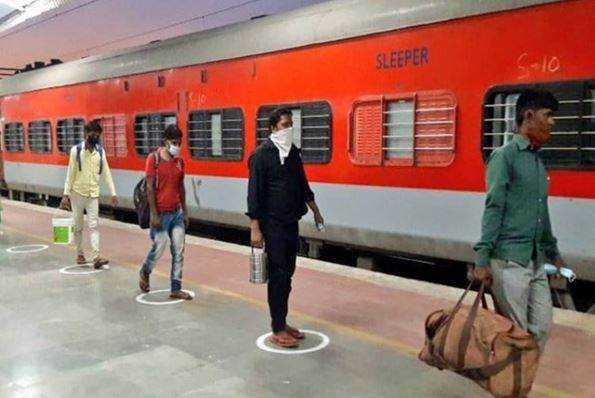Search here

19-Jun-2020
Indian Railways Create History With It's Shramik Special Trains
In the last round of March, the entire lockdown in India was done. Meanwhile, when the passenger facilities of Indian Railways were stopped from 22 March, the railwaymen and railway passengers were all stunned.
The reason for this was that such a nationwide roundabout took place for the first time in the history of Indian Railways since its introduction in 1853.
This was a historic decision to protect the countrymen from the infection of the Corona epidemic. The verdict was humane, tolerant, and mildly based, so that rail passengers could be saved from the outbreak of the epidemic. In the midst of a nationwide lockdown during the Corona transition, the ease with which Indian Railways transported workers across the country by special trains will be remembered for a long time.
Meanwhile, due to a prolonged period of lockdown, the railways started thinking about this in view of the demand of the workers living in many metros and cities of the country to run trains for their home states to go to villages. After this, contemporary steps were taken in coordination with the respective state governments and the Railway Ministry. The most important question in this was related to passenger safety. Actually, there was danger from an invisible and deadly infection, due to which the challenge was to manage everything in a new way.
We have to understand that providing the coaches for the special train is a process in which all the related purposes of operation, repair, cleanliness, crew, time table, catering, etc. are fixed several months in advance. Preparations for running Kumbh Mela, summer special train, pilgrimage special train, or special trains run on the occasion of festivals are months in advance.
In such a situation, it can be understood how complex work of labor special trains was. There are several reasons for this, such as not having a pre-set time table, the train operator not having proper knowledge of the rail route, ensuring information about the signal, and following the safety rules. The challenge to maintain distance and control congestion among passengers on the platform was also a major problem.
However, despite all these challenges, the Indian Railways, while performing its duties, tried everything possible to provide food and water for the passengers at the stations even in lockdown.
According to IRCTC data, even in this difficult period, the railways distributed 1.19 crore food packets to the passengers, while the state governments also gave 54 lakh food packets to the passengers on their behalf. Also, the railways distributed 1.5 crore bottles and 54 lakh bottles to the passengers.
Indian Railways did not allow any labor services nominated by the states to be canceled. In some states, such as Maharashtra, only 776 out of the total 885 designated special trains could run. The state government could not use other trains. However, the Maharashtra government gave the reason that the passengers could not gather at the designated railway station within the stipulated time.
Teams of competent officers were formed to coordinate between rail and state governments at every level to send laborers from metros and cities to their home states by train. This new methodology was implemented in several stages. The first phase was from May 1 to 19, in which some of the few services were run.
Pre-travel health check-up of all passengers was ensured and complete arrangements for food and water were made on the way. In this phase, quarantine was the responsibility of the state that was the abode or destination of the workers to prevent infection after travel.
The second phase of the operation of Shramik Special trains took place between 20 to 24 May in which the provision of prior permission of the States for the operation of Shramik trains was removed from May 19 after high-level negotiations.
This simplified the management of the operation of labor trains to some extent and also saved time. Due to this, all the zones and divisions of the railways got ready for the work of special trains, and it was possible to halt labor special trains at stations other than the destination station in the states related to railway operations.
READ HERE MORE : World Refugee Day 2020 : UN General Secretary Appeal To World
In fact, as per the orders of the Ministry of Home Affairs, passengers arriving at these destinations had to be taken by bus to the quarantine location to follow the rules, due to which it took a long time to get passengers out of trains on the railway platform. Special labor services encountered some problems from 20 to 24 May.
Most of the about 100 labor trains going towards Uttar Pradesh and Bihar every day put some pressure on some trains. Nevertheless, the rules regarding the health and physical distance of the workers, the passengers, were followed with full vigor during the entire journey. The shared equation with state governments has been an unprecedented and unique experience in this entire system.
Amid the lockdown, Indian Railways made its best efforts to provide maximum facilities to the public. Labor trains were busy in bringing the passengers to their homes safely. This is a context that will always keep the railway services alive in the memoir of the public, feeling of inspiration, hope, and well-being.

Content Writer/Journalist
I am a content writter !
Join Our Newsletter
Subscribe to our newsletter to receive emails about new views posts, releases and updates.
Copyright 2010 - 2025 MindStick Software Pvt. Ltd. All Rights Reserved Privacy Policy | Terms & Conditions | Cookie Policy